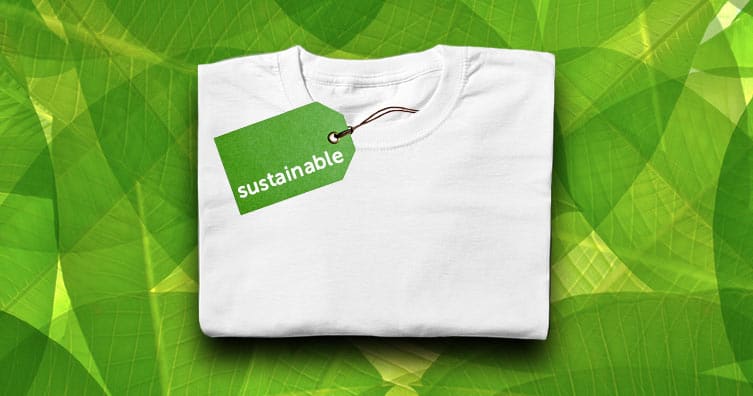Cape Town Sustainable Fashion Designers Leading the Green Activity
Cape Town Sustainable Fashion Designers Leading the Green Activity
Blog Article
Remain Ahead of the Contour by Exploring Cutting-edge Style Patterns
In an industry as vibrant as style, staying in advance entails more than just complying with current patterns-- it demands an exploration of development. The merging of technology and style advertises a new period of customer engagement.

Embracing Smart Textiles
In the last few years, the style market has actually witnessed a transformative shift with the combination of clever fabrics, a cutting-edge innovation that mixes technology with material. This advancement stands for not only a combination of looks and capability yet additionally a substantial jump in the direction of sustainability and personalization in vogue. Smart fabrics, additionally called e-textiles, installed advanced electronic devices such as sensing units and conductive threads within the fabric, enabling garments to interact with the wearer or the environment.
These fabrics are created to keep an eye on physiological parameters, such as heart price or body temperature level, giving real-time health and wellness analytics. Beyond health applications, smart textiles are also being used for adaptive clothes, which can change color or pattern in feedback to ecological stimuli, hence supplying a dynamic fashion experience.
Moreover, the development of energy-harvesting fabrics that produce power from activity or sunlight is paving the means for self-dependent wearable innovation. This innovation is attracting eco conscious consumers and designers intending to lower the ecological footprint of fashion. As r & d in this field breakthrough, clever textiles are expected to end up being significantly widespread, improving the landscape of modern style with their multifunctional capacities.
The Rise of 3D Printing
Reinventing the production landscape, 3D printing has become a game-changer in the fashion business. This cutting-edge innovation has made it possible for designers to press the limits of imagination, producing complex and customized garments that were previously inconceivable. By leveraging electronic layout and additive production, 3D printing helps with the development of intricate geometries and patterns, enabling developers to try out new appearances and structures.
A significant benefit of 3D printing in fashion is its capability to generate on-demand, decreasing waste and decreasing stock requirements. This effectiveness not just optimizes production procedures yet also enables quick prototyping, making it possible for developers to bring their visions to life in a shorter timeframe. Additionally, 3D printing supports customization somewhat unequaled by conventional methods, using tailored fits and special designs tailored to specific customer choices.
The surge of 3D printing has actually also democratized fashion, making it available to arising designers who can currently produce high-quality pieces without considerable financial investment in conventional manufacturing facilities. As innovation remains to development, the fashion sector is positioned to harness the complete possibility of 3D printing, checking out new materials and techniques that will certainly redefine how fashion is conceived and created.
Sustainable Style Developments
As the fashion business comes to grips with journalism requirement for environmental responsibility, lasting fashion advancements have actually emerged at the forefront of transformative modification. The expanding recognition of environmental influence has fueled a change in the direction of even more eco-conscious methods and products. Brands and developers are now prioritizing sustainability, including methods that minimize waste and lower carbon impacts.
One substantial development is the rise of circular style, which emphasizes recycling and upcycling to expand the lifecycle of garments. This approach not just lowers waste yet likewise urges customers to embrace an extra mindful technique to garments intake.
One more breakthrough depends on the fostering of cutting-edge dyeing techniques that use all-natural dyes or waterless processes, thereby minimizing the substantial amounts of water and chemicals generally utilized in fabric dyeing. Moreover, advancements in biotechnology have led to the production of lab-grown natural leather and materials, using cruelty-free and eco-friendly options to standard products. Through these pioneering efforts, the garment industry is making purposeful strides towards a more sustainable future.

Tech-Integrated Apparel
Tech-integrated apparel represents a groundbreaking blend of style and innovation, improving exactly how individuals engage with their apparel. This cutting-edge domain is noted by the addition of smart fabrics and embedded digital components, improving both functionality and visual charm. From health and fitness trackers embedded in sports apparel to heated jackets regulated by means of smartphone applications, tech-integrated clothing provides customers unmatched ease and adaptability.
Introducing brand names are driving this pattern, concentrating on creating garments that respond to environmental stimuli or individual commands. For instance, some garments can alter shade or pattern in reaction to temperature level shifts, while others incorporate Learn More biometric sensors to keep an eye on health and wellness metrics like heart rate or anxiety degrees. The seamless assimilation of modern technology right into fabrics likewise prolongs to environmental sustainability, with efforts to develop self-cleaning materials or garments that adjust to weather problems, hence lessening the need for several layers.
Additionally, the introduction of wearable innovation is not simply restricted to garments but reaches devices like watches and eyeglasses, more expanding the scope of tech-integrated fashion. As the market remains to introduce, the capacity for customization and customization in garments grows, offering consumers distinct, tech-enhanced style experiences that provide to their individual demands and choices.
Future of Virtual Fashion
In the last few years, the future of online fashion has actually arised as a transformative force within the sector, leveraging improvements in digital technology to redefine just how fashion is developed, experienced, and taken in. By incorporating augmented truth (AR), virtual reality (VR), and 3D design devices, designers can currently craft interactive and immersive experiences that go beyond conventional style limits. Virtual style allows for the development of garments that exist solely in digital atmospheres, offering unlimited opportunities for advancement without the limitations of physical manufacturing.
This electronic shift not just offers opportunities for imaginative expression but likewise addresses sustainability problems intrinsic in traditional fashion techniques. Cape Town Sustainable Fashion. By removing the need for physical sources, virtual fashion minimizes waste and decreases carbon footprints. Additionally, the surge of virtual fashion lines up with the boosting customer need for customized and distinct experiences, as digital garments can be tailored and customized to individual preferences effortlessly

Verdict
The fashion sector's future lies in the integration of ingenious modern technologies and lasting techniques. Digital fashion is poised to redefine customer communications.
In current years, the style industry has seen a transformative shift with the assimilation of clever textiles, an innovative development that blends innovation with material.As the style industry grapples with the pressing requirement for environmental obligation, lasting style technologies have emerged at the forefront of transformative modification.In recent years, the future of virtual style has i loved this actually arised as a transformative force within the industry, leveraging innovations in digital modern technology to redefine just how fashion is produced, experienced, and consumed. The rise of virtual fashion aligns with the boosting consumer demand for distinct and personalized experiences, as virtual garments can be tailored and customized to individual choices with convenience.
The style sector's future lies in the integration of innovative technologies and lasting practices.
Report this page